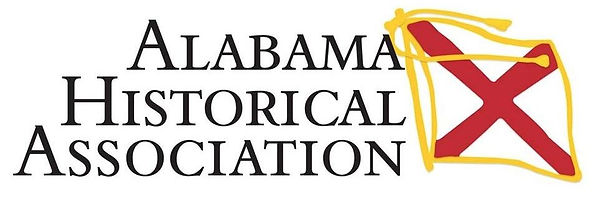
Canoe Station
Settled by A.J. Hall in 1852 and occupied by Confederate troops because of its value as a railroad stop during the War Between the States (1861-65), Canoe was the site of a March 27, 1865 encampment of Union forces. The 1870s brought expansion through the A.M. Lowery sawmill. The Farrar, Lowrey, Stanton, Watson, and other stores prospered (1890s-1950s). Schools educated the young and the L&N Railroad provided passenger service (1890-1960s).
The mineral springs was a social center and water was bottled and shipped from the site (early 1900s). WPA employed residents during the Great Depression (1930s). Local sons fought in WWII (1941-45). Many businesses had closed by the mid-1960s as larger commercial centers attracted Canoe's residents.
Erected by William Caney Camp, Sons of Confederate Veterans
[2007: Hwy 31 east of Atmore 31.02635N 87.40944W]
Downing-Shofner School
East Brewton, 1906-1943
Dr. J. M. Shofner (1863-1926) founder, dedicated his life to-"Give boys and girls a chance."
Dr. Elisha Downing-Humanitarian
First building erected named in honor of Mrs. Esther Downing.
Trustees-1906: J. M. Shofner, D. Gillis, J. E. Finley, W. W. Hinote, J. M. Davidson, J. F.
Jones, James K. Kyser.
[Shorter St., East Brewton 31.10012N 87.05573W ]
Ritz Theatre
The Ritz Theatre opened its doors on this site September 14, 1936, and for more than fifty (50) years prided itself as the "Hub of the Brewton Community." Between its first feature, "YOURS FOR THE ASKING," and its last, "CROCODILE DUNDEE," shown January 22, 1987, the Ritz served as stage for fashion shows, beauty pageants, dances, and various other community events. Stars of the "Grand Ole Opry" and "Hollywood" made live appearances at the Ritz. The Ritz was the community's prime source of reliable news from the battle-front during World War II. With a seating capacity for 761, the Ritz was the place to be on Saturday afternoon for generations of children. This legacy of the Ritz Theatre has been perpetuated with the construction of this community message center in March 1996.
[1996: Hwy 31 at 29, Brewton 31.10348N 87.07291W]
Site of Fort Crawford
Fort Crawford was established in 1816 by elements of the 7th U.S. Infantry under order from Major General Andrew Jackson. Purpose was to monitor Spanish activities in West Florida and curtail hostile Creek Indian activities.
Named after Second Lieutenant Joel Crawford, the fort was occupied by units of the regular U.S. Infantry and the Alabama Territorial Militia.
It was abandoned in 1819 after the United States purchased Florida from Spain and the Indian menace abated.
[Shofner and Weaver Streets, East Brewton 31.1005N 87.05482W ]
Site of Pollard
Located 1½ miles south, town of Pollard established in 1861 at juncture of Alabama & Florida and Mobile & Great Northern railroads.
One of the largest military training camps of Confederacy located here during Civil War. Also site of major Confederate stores depot. Town suffered much destruction in Federal raids of December 1864 and March 1865.
Served as first county seat of Escambia County from 1868 until 1883 when county government moved to Brewton.
[U.S. Hwy 31 between Flomaton and Brewton 31.04659N 87.17494W ]